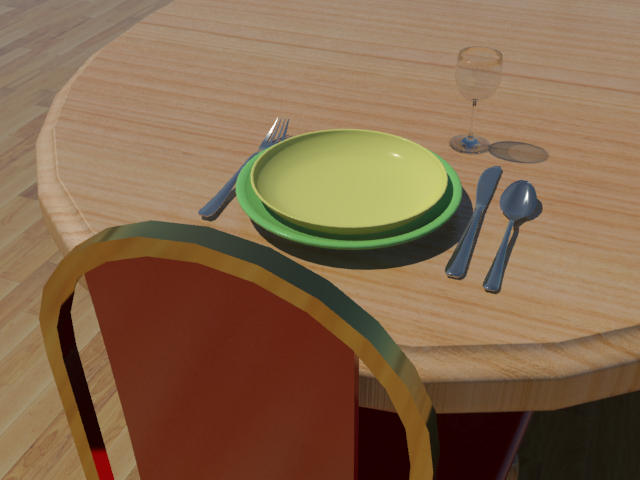Autodesk Materials are mental ray materials that model materials commonly used in construction, design, and the environment. They correspond to Autodesk Revit materials, as well as materials in AutoCAD and Autodesk Inventor, so they provide a way to share surface and material information if you also use those applications.

A scene that uses Autodesk Materials
Autodesk Materials are based on the Arch & Design material. Like that material, they work best when used with physically accurate (photometric) lights, and geometry that is modeled in real-world units. On the other hand, the interface of each Autodesk Material is much simpler than the Arch & Design material interface, and lets you achieve realistic, physically correct results with comparatively little effort.
Many Autodesk Material types have one or more Autodesk Bitmaps. To change the default bitmap assignment (if there is one), view the parameters for either the Autodesk Bitmap itself, or the parent material, and then click the map button. 3ds Max opens a file dialog so you can specify an image file. On the Parameters rollout for the Autodesk Bitmap type, the button is labeled Source; in the settings for the parent material, usually the button is labeled Image.
Uninstalling Autodesk Materials
For detailed information about installing or uninstalling Autodesk Material libraries, and how to reinstall them, see the section “Installing Autodesk Material Libraries” in the Installation Guide.
This material has the appearance of glazed ceramic, including porcelain.
This material has the appearance of concrete.
This material is a generic interface for creating a custom appearance.
This material is for thin, transparent surfaces such as glazing in windows and doors.
The Hardwood material has the appearance of wood.
This material has the appearance of masonry or of concrete masonry units (CMUs).
This material has the appearance of metal.
This material has the appearance of metallic paint, as on an automobile.
This material acts as a mirror.
This material has a synthetic appearance, as of plastic or vinyl.
This material has the appearance of solid glass.
This material has the appearance of stone.
This material has the appearance of a painted surface.
This material has the appearance of water.
These topics describe controls that are common to all or most Autodesk Materials.